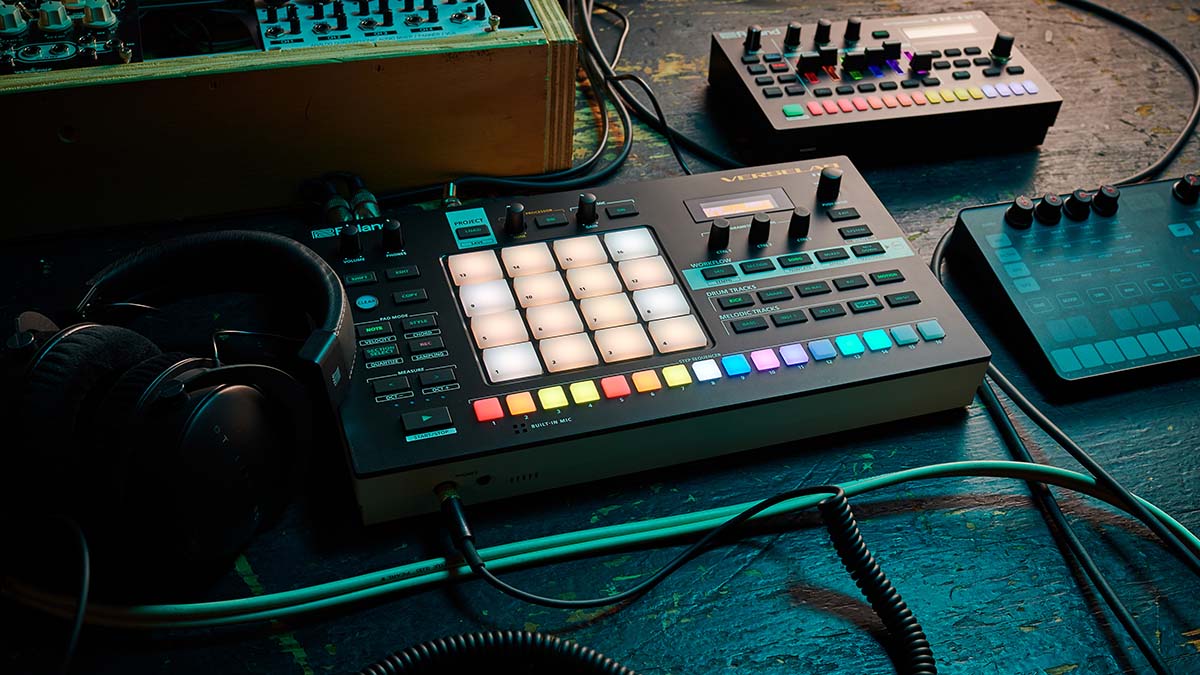MusicRadar Verdict
The Verselab is a workable solution for computer-averse producers while integrating with the computer when you need it to.
Pros
- +
Beautifully organised user interface.
- +
Built-in mic for spontaneous vocals.
- +
Covers production from beat to mastering tasks.
Cons
- -
The plastic body casing feels cheap.
- -
…and transmits handling noise through to the mic.
- -
A larger display would be helpful.
MusicRadar's got your back
What is it?
Unusually for a hardware sequencer, the Roland Verselab MV-1 is all about vocals. It’s a sequencer, sampler, and software instrument host that uses all that as a support network for your voice.
Whether processing your vocals in real-time, or recording them, or importing from another source: the Verselab is good for it all.
The MV-1 features a small LCD display, and various well-labelled knobs and buttons, all of which have some chance of being readable on stage, being either black-on-white or white-on-black and no greys in-between. There are 16 sequencer step buttons arrayed along the lower edge, and there are 16 square pads in the centre of the unit for playing beats and other functions.
At the back, there’s a mains power input and on/off switch, a USB-B port, full-size MIDI in/out, SD card slot, Kensington lock slot, 1/4” left and right line inputs, an XLR mic input, and finally, 1/4” left and right line outputs. The front panel features both 1/4” and 1/8” headphone jacks, and a small grille covers a built-in mic. Truthfully, we’d prefer a more solid-feeling case, but nothing fell off during the review!

The Verselab can be powered from the included mains adaptor, or kept portable with a USB-style power bank. There is a minimum of multi-function buttons, with separate buttons for choosing different types of drum track (like kick, snare), for each type of ‘melodic’ track (bass, instrument 1, instrument 2, vocal), and a Workflow section, highlighted with a white panel and a progression from left to right, starting with Seq(uence), then Section, then Song, Mixer, and finally Mixdown, ending with a graphic of a WAV file – that’s a great visual representation of how music is constructed here.
Roland provides project templates if you need backing in a hurry, otherwise, it’s not such a leap to create your own. Press the drum track/kick button, then navigate to your chosen kit or sound – you can play it on the 16 large pads. Then enter record or step record mode, and add your chosen kick to the required steps in the bar using the lower pads.
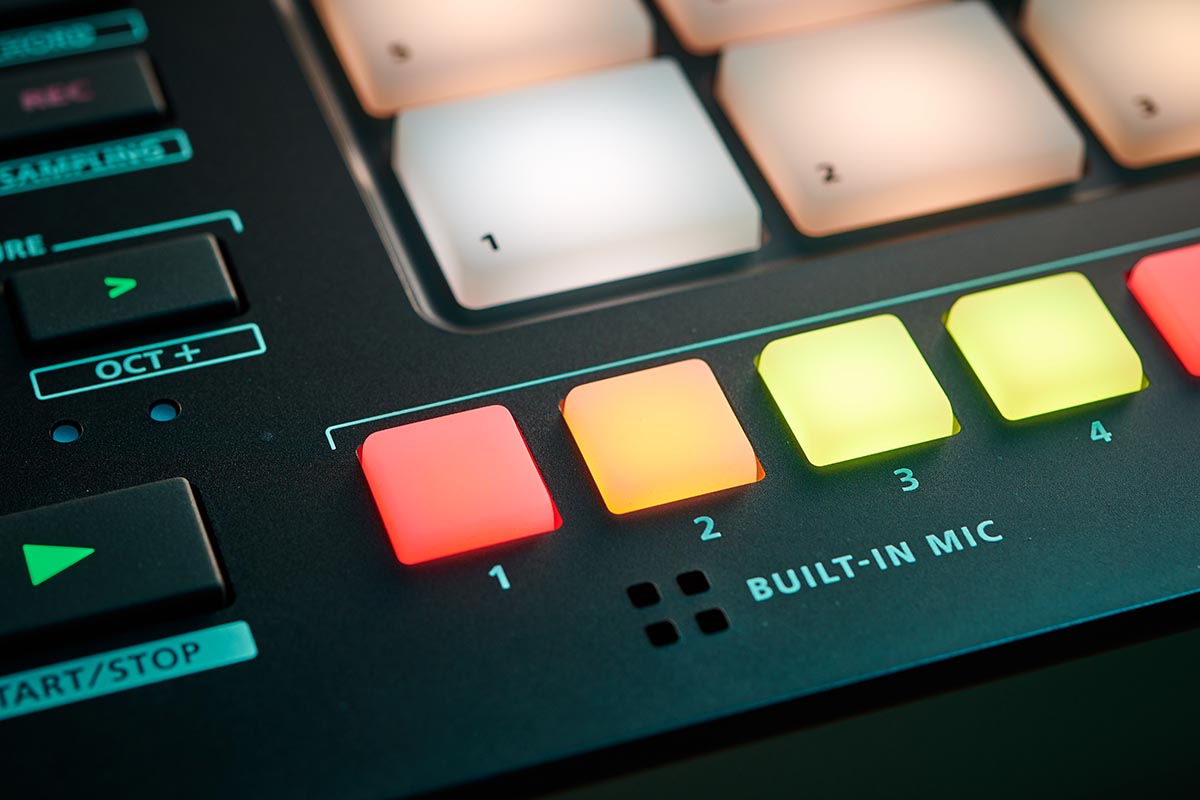
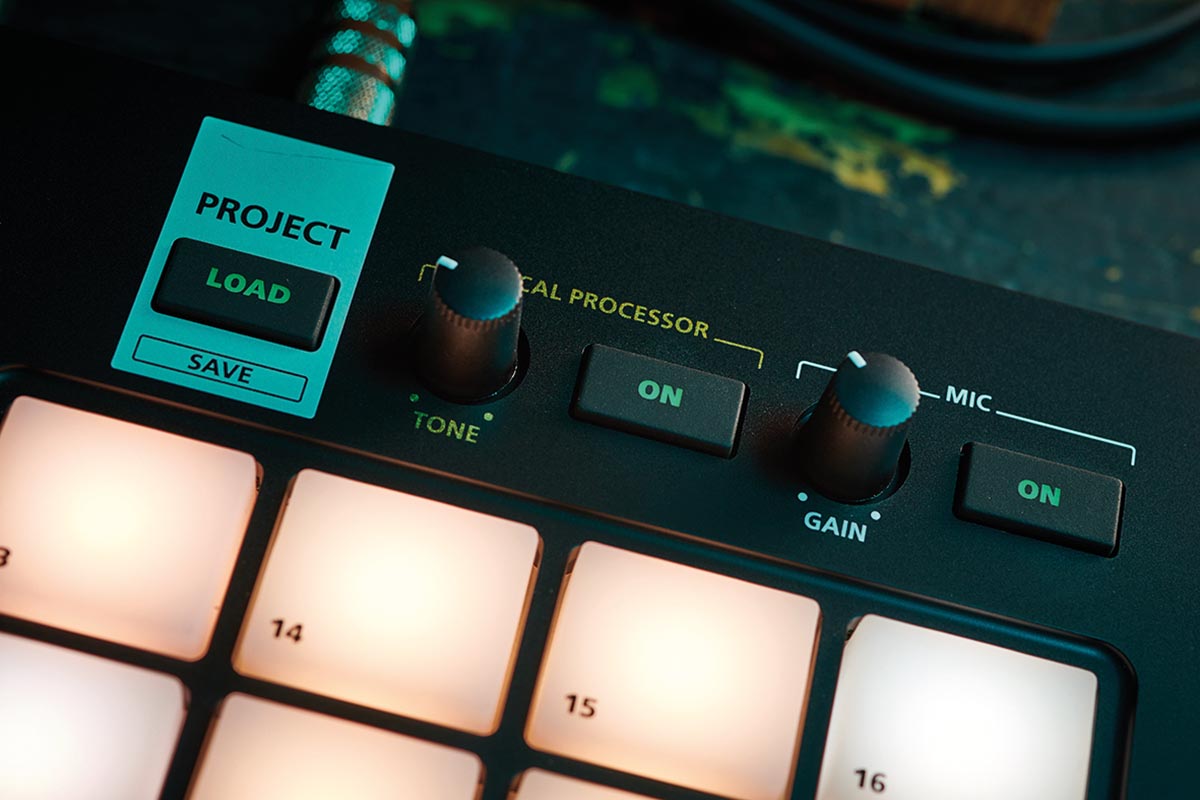
Expand that from there, adding more kit sounds, then a bass and keyboards, maybe, using the preconfigured tracks for each purpose. If you don’t want to start from scratch, there’s a library of patterns that can be incorporated into a new production.
Want all the hottest music and gear news, reviews, deals, features and more, direct to your inbox? Sign up here.
The onboard sounds, of which there are more than 1000, plus 80 kits, are from Roland’s ZEN-Core sound library, which is shareable across compatible instruments and software.
These presets are editable up to a point, but really the emphasis is on the sheer number of sounds available. The MV-1 connects to computers or mobile devices, and then to the cloud, through the Zen Beats app. Over USB, it can send and receive multichannel audio and MIDI.
It's all about the vocals
The Verselab MV-1 is fairly unique in terms of the way it incorporates the human voice into the world of sequencing and grooveboxes.
On one level, it’s not really so different from Roland’s own MC-707, but that machine is also squarely aimed at exploiting the ZEN-Core sounds, with a bit of sampling, sequencing, and enough controls for live interaction. The MV-1 keeps those elements, but bumps them to one side, to accommodate the vocal capture, import, and processing.
There are plenty of hardware tools that deal with vocal processing – Roland itself has the VT-1 and VT-3 Voice Transformers, and Boss (a division of Roland) offers the VE-500 Vocal Performer, a pedal aimed at performers who also need real-time vocal effects. TC Helicon is a big name in this field, with the VoiceLive range of pedals and tabletop devices.
Performance and verdict

The 16 large pads are for playing beats, but also as a grid-based keyboard, with the ability to assign scales across the pads, and chords to each pad individually. They’re also used as a selection tool for certain functions, like choosing a vocal take to load into a track, or selecting patterns before chaining them together.
The row of smaller pads are typically used for step sequencing – no surprises there if you’ve used any Roland drum machine or groovebox before. Each pad represents a step in a pattern for the currently selected track and instrument. Again, however, these perform other functions, like sequencing the start of a vocal take or choosing a step in a chain of patterns.
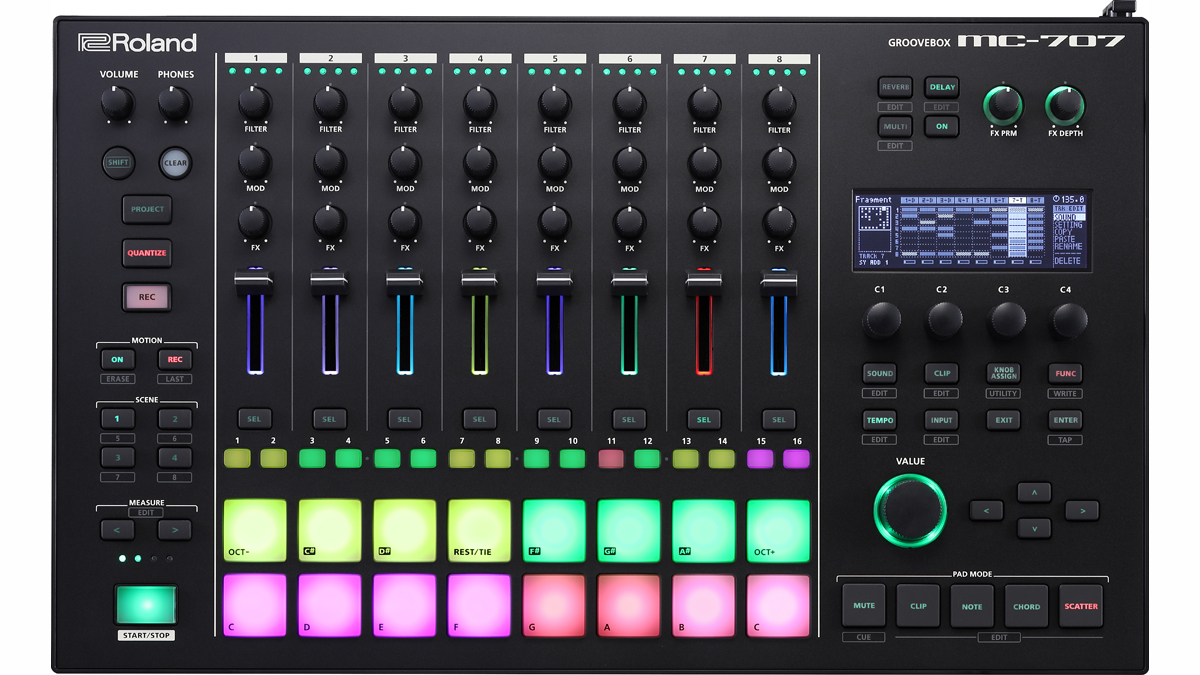
• Roland MC-707
Going the other way, the MC-707 focuses on delivering ZEN-Core sounds, plus sampling, in a groovebox format.
• Boss VE-500
Still hardware, but even more vocal-oriented - the Boss VE-500 is a pedal that includes effects, pitch correction, and harmony options.
Then there’s that built-in mic, and the rear mic input (48v phantom power is available). A vocal recording is known as a ‘take’, and up to 16 takes are permitted in each project. Recordings can be imported via the SD card, so if necessary you can do some editing and prep first.
There’s a suite of vocal-oriented effects available, which can be applied during or after recording – these are fairly restrained, and Roland have probably done the right thing by avoiding excessively heavy or cheesy sound processing. There are very obvious controls for vocal processor on/off, tone, and mic on/off, gain – keeping menu diving to a minimum.
Use a large pad to select a take slot and record your part, then set the start and endpoints, and place in the sequencer timeline by using the lower row of buttons.

The workflow continues to mixing and mastering – with mastering effects like a multiband compressor, equaliser, and a limiter. You can then create a stereo mix on the SD card with either the full song, instruments or vocals only. We like the self-contained nature of it and the challenge of doing it all in this box.
Not everybody wants to master a DAW before they feel qualified. The MV-1 is a 21st-century take on the cassette multi trackers that were once used to create home demos.
The marketing is dead-on – targeted at somebody who perhaps has a small amount of outboard, and likes the convenience of social media for sharing resources and mixes, but who gets a kick out of working against the limitations of hardware.
MusicRadar verdict: The Verselab is a workable solution for computer-averse producers while integrating with the computer when you need it to.
The web says
“There is a lot of power in the Verselab MV-1, and it has the potential for some great results. However, to increase flexibility, it does perhaps compromise immediacy and overall usability. For example, on a single track, each successive Clip could use a different tone or sound engine (and effect). You need to be able to edit and keep track of all of these. It, therefore, brings into focus an issue that plagues many all-in-one boxes such as this: simplicity vs flexibility.“
MusicTech
Hands-on demos
Sweetwater
loopop
RolandChannel
Sanjay C
Specifications
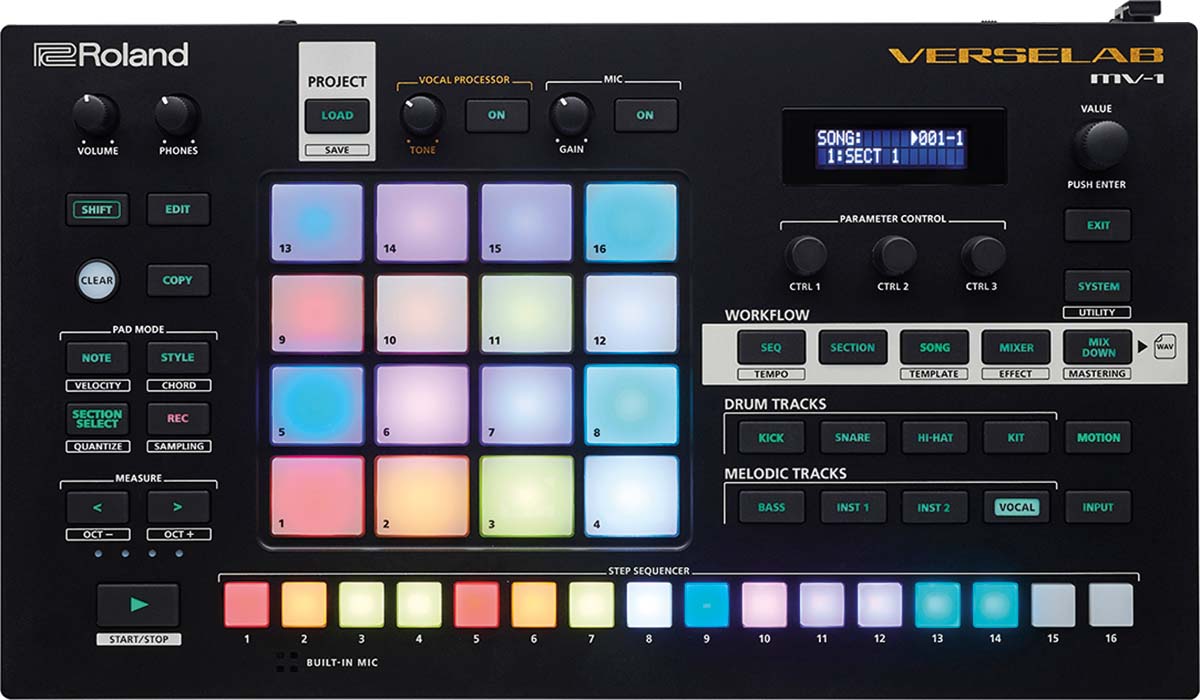
- TYPE: Hybrid groovebox
- KEY FEATURES: Built-in microphone, external microphone input with phantom power, Zen-Core compatible (3,000+ presets, 80+ drum kits), up to 128 voice polyphony, seven tracks and one vocal track, eight looper tracks, 16 vocal takes, effects, step sequencer, looper, SD card storage, USB audio and MIDI, can be powered via USB
- CONTACT: Roland

Martin Delaney was one of the UK’s first Ableton Certified Trainers. He’s taught Ableton Live (and Logic Pro) to every type of student, ranging from school kids to psychiatric patients to DJs and composers. In 2004 he designed the Kenton Killamix Mini MIDI controller, which has been used by Underworld, Carl Craig, and others. He’s written four books and many magazine reviews, tutorials, and interviews, on the subject of music technology. Martin has his own ambient music project, and plays bass for The Witch Of Brussels.
